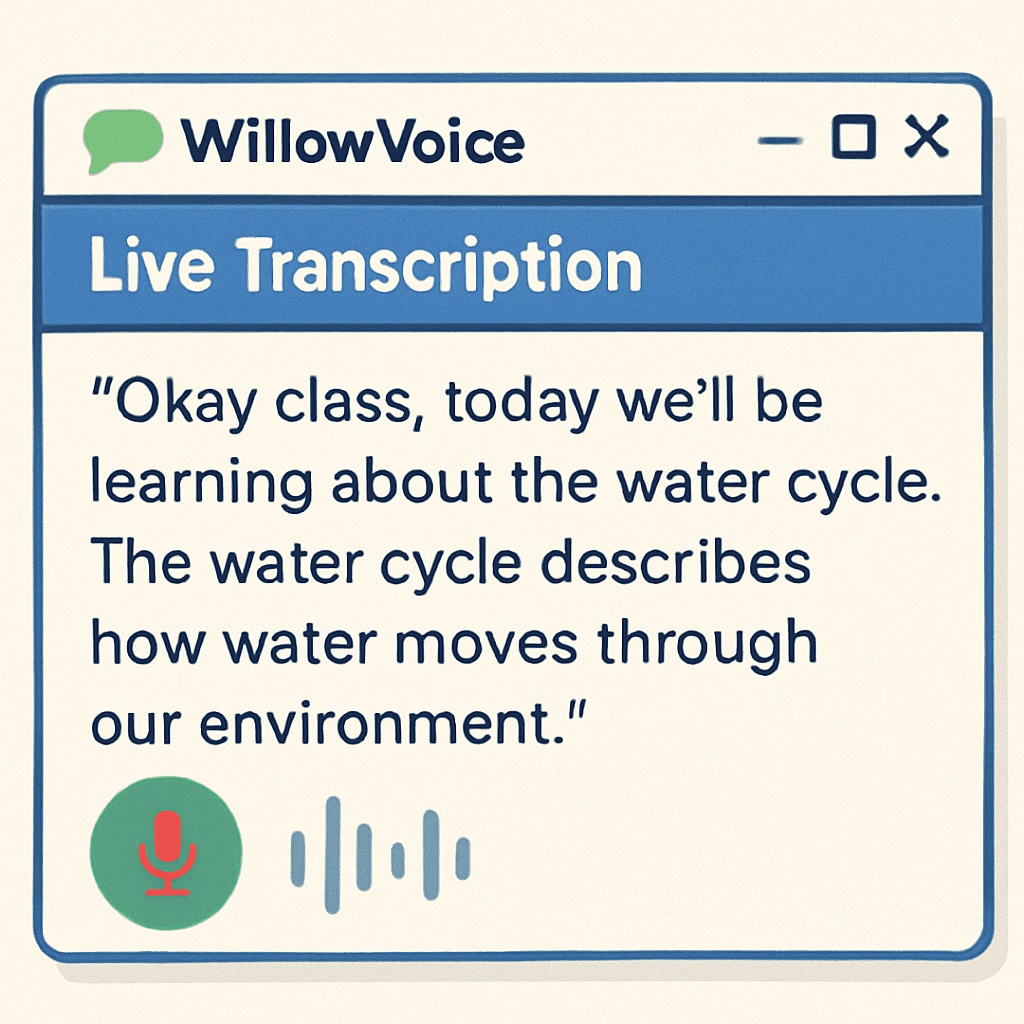In the evolving landscape of education, teachers face mounting administrative tasks that often detract from their primary focus: delivering high-quality instruction. Speech-to-text technology, such as WillowVoice, has emerged as a game-changer in K12 education. By streamlining teacher workflows, improving teaching feedback processes, and minimizing time spent on administrative tasks, these tools enable educators to dedicate more energy to their students. This article delves into the transformative potential of speech-to-text tools in reshaping the teaching landscape.
The Growing Administrative Burden on Teachers
Teaching is no longer limited to classroom instruction. Modern K12 educators juggle lesson planning, grading, student assessments, and administrative documentation. According to a report on education, teachers spend an increasing portion of their time on non-instructional tasks, sometimes exceeding 20 hours per week. This administrative overload can lead to burnout and reduced teaching effectiveness.
Speech-to-text technology, however, offers a solution. By converting spoken words into written text, tools like WillowVoice allow teachers to quickly record notes, generate reports, and document student progress without the need for manual typing. This efficiency not only saves time but also reduces cognitive load, enabling educators to focus on their core responsibilities.

WillowVoice: Tailored for K12 Education
WillowVoice stands out as a speech-to-text tool specifically designed for educators. Unlike generic transcription software, it excels in recognizing academic terminology, making it ideal for creating detailed lesson plans, student evaluations, and teaching feedback. Its user-friendly interface allows teachers to dictate reports or summaries seamlessly, even in noisy environments like classrooms.
Key features of WillowVoice include:
- Academic Vocabulary Recognition: Supports specialized terms across various subjects, ensuring accurate transcription.
- Integration with Learning Management Systems (LMS): Allows direct uploads of transcriptions to platforms like Google Classroom or Canvas.
- Real-Time Transcription: Converts speech to text instantly, saving hours of manual work.
By leveraging these features, teachers can generate actionable teaching feedback within minutes, enabling a quicker response to students’ needs.

Transforming Teacher Workflows with Speech-to-Text Technology
Integrating speech-to-text tools like WillowVoice into teaching workflows offers numerous benefits. For instance, teachers can dictate lesson plans on the go, draft emails without typing, or provide verbal feedback on student assignments. As a result, repetitive tasks are minimized, and more time is allocated to creative and interactive teaching strategies.
Consider these workflow improvements:
- Faster Documentation: Speech-to-text tools allow teachers to create detailed student progress reports simply by speaking.
- Enhanced Collaboration: Transcriptions can be shared with colleagues or parents to foster better communication.
- Accessibility: Teachers with disabilities or repetitive strain injuries benefit significantly from hands-free documentation.
Moreover, research from assistive technology studies highlights the cognitive benefits of reducing multitasking, further enhancing teachers’ productivity.
The Future of Speech-to-Text in Education
As technology evolves, speech-to-text tools will become more sophisticated, offering features like multilingual support, AI-driven insights, and advanced customization. For K12 education, this means not only improved teacher workflows but also enhanced student outcomes. By reducing administrative burdens, teachers can allocate more time to individualized instruction, fostering a more engaging and effective learning environment.
In conclusion, speech-to-text technology, exemplified by WillowVoice, is transforming the teaching profession. By addressing the challenges of administrative overload and enabling efficient teaching feedback, these tools empower educators to focus on what truly matters: inspiring and educating the next generation.
Readability guidance: This article employs short paragraphs and lists to ensure clarity. It minimizes long sentences and uses transition words to enhance the flow of ideas. Images are integrated to visually support key points.


